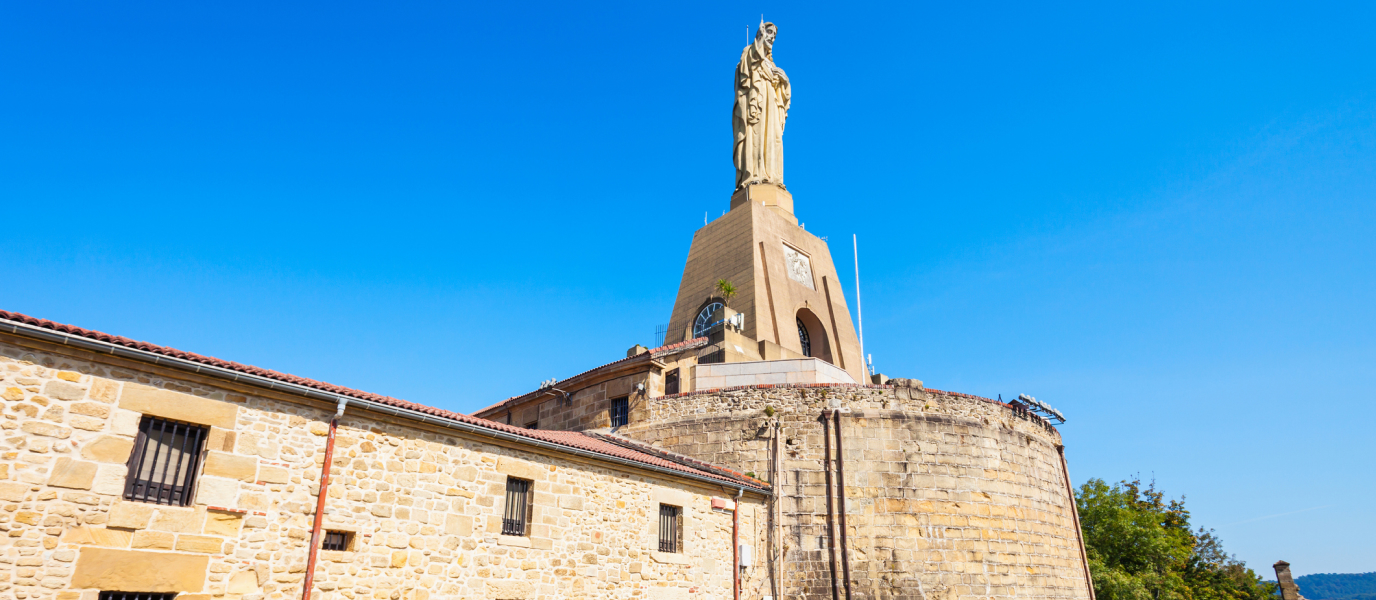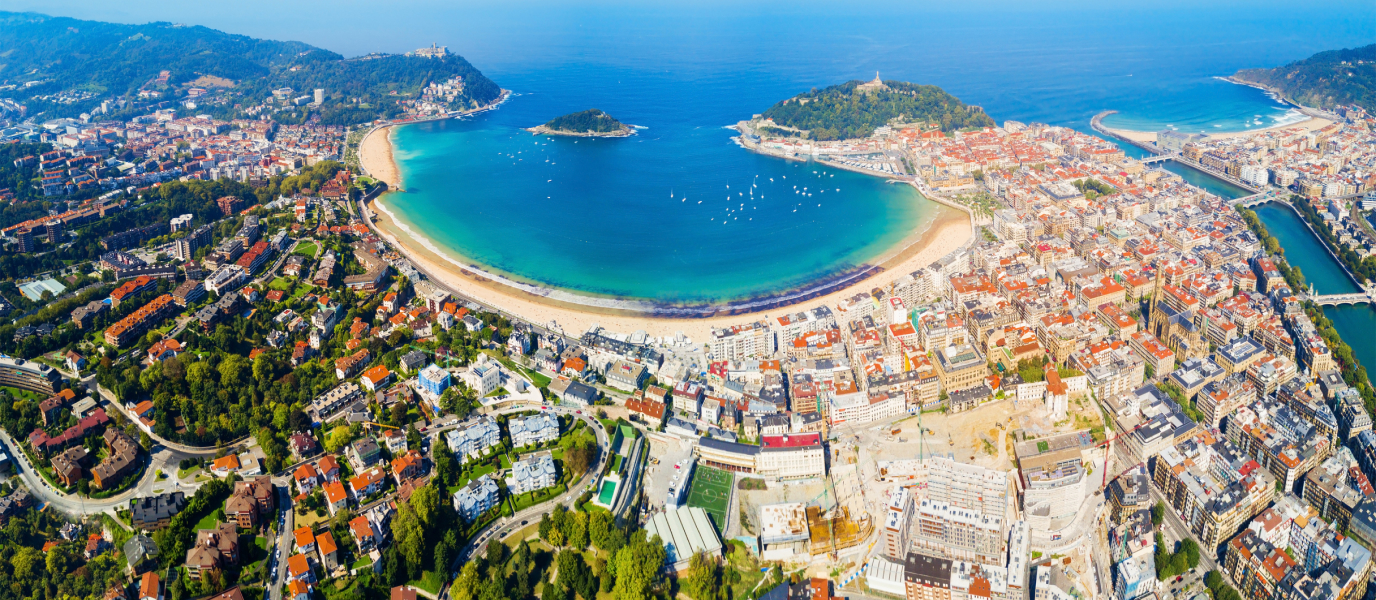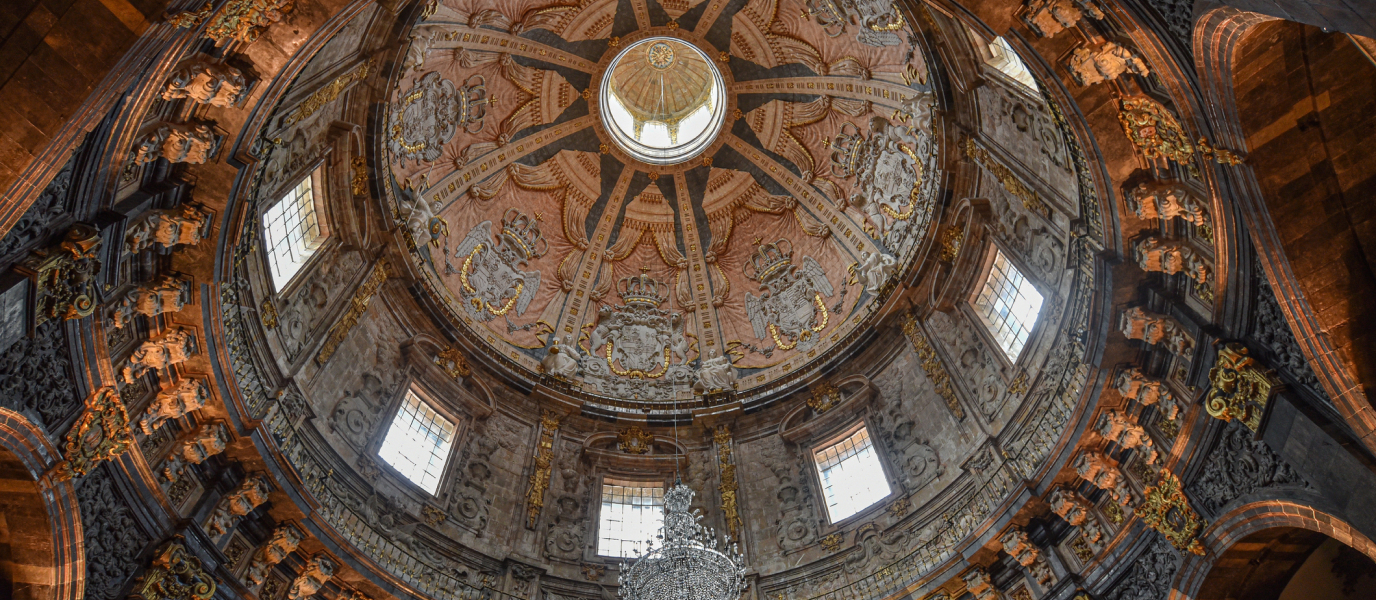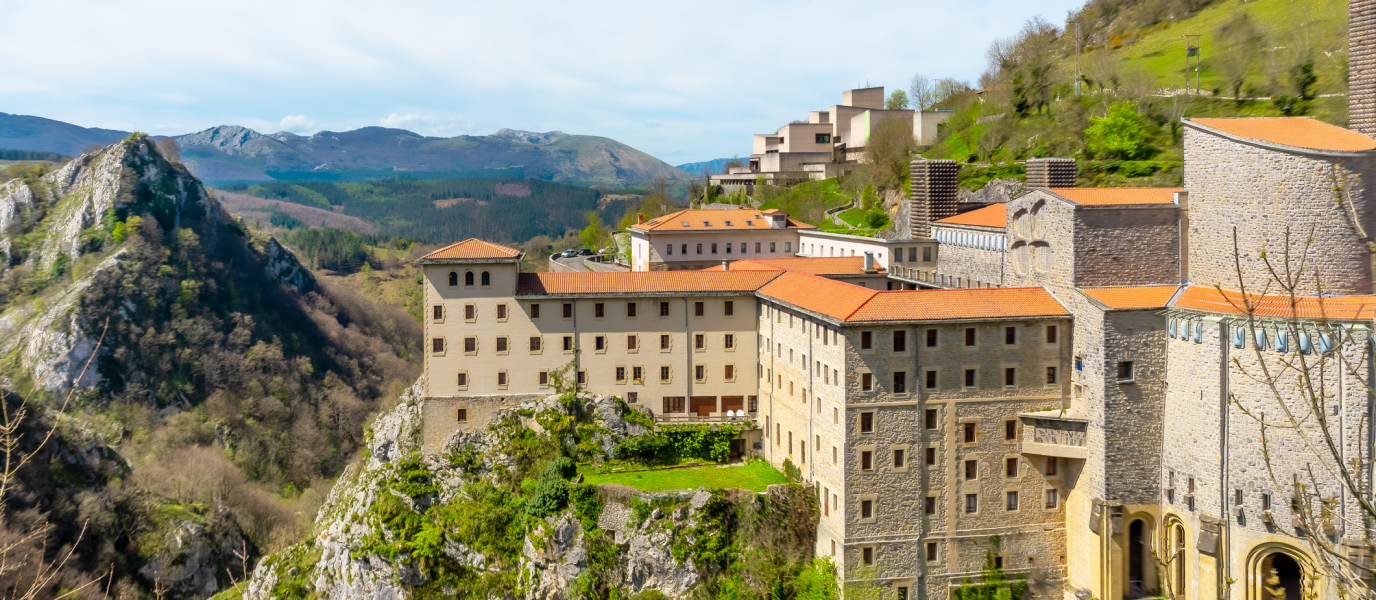The city of San Sebastián is also known by another name: Irutxulo. This Basque word roughly means ‘three openings’ and was coined by the city’s fishermen because of the three, naturally-formed ‘openings’ they could spot from out at sea. These openings were formed between Mount Igueldo and Santa Clara Island; Santa Clara Island and Mount Urgull; and Mount Urgull and Mount Ulía.
Mount Urgull’s strategic location has played an undeniable role in the city’s history over the centuries. Located at the heart of the Old Town, it no longer fulfils a military function. Today, locals and visitors come to this lush green space to enjoy pleasant walks along tree-lined paths and take in the dazzling panoramic views of the city and the bay.
At the summit of Mount Urguell stands the 12th-century military fortress of Castillo de la Mota. The stronghold has stood the test of time and remains intact to this day. It has passed through the hands of many monarchs, who each contributed to the evolution of the building over the years. Such mighty strongholds are not without their legends and Castillo de la Mota is no exception.
The origins of Castillo de la Mota
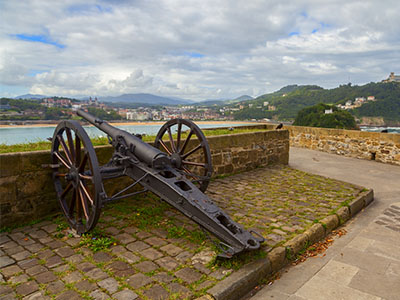
San Sebastián was initially a settlement and was founded as a city by King Sancho VI (the Wise) of Navarre in 1180 in order to control the direct access to the sea from the peninsula. The settlement was tucked at the foot of Monte Urguell which acted as a natural barrier from the blustery northern winds and tumultuous sea. However, the city needed protection from foreign attacks so, in 1194, King Sancho VII (the Strong) of Navarre ordered the construction of a protective wall around the city and a fortress at the top of Mount Urguell. The city lived a few centuries of relative peace before it was besieged by Franco-Portuguese troops in 1476. The fortress played a key role in providing shelter to city inhabitants during the assault. Afterwards, the Catholic Kings ordered the building to be further fortified.
In the 16th century Carlos V ordered several additional reforms during, including the construction of a keep, a fortified barbican and gallows. He also ordered that all the trees be cut down to thwart attacks from foreign troops. Joris Hoefnagel’s 16th-century engraving provides an excellent idea of what the city and the fortress looked like during that period.
In 1575, lightning struck a powder keg and almost burnt down the entire building to the ground. When it was rebuilt, the original architecture was maintained. In the 17th century, the engineer Tiburcio Spanochi was commissioned to further fortify the stronghold after it was struck by lightning (again). Its impregnable design was put to the test when the Duke of Berwick shelled the fortress incessantly for two weeks until he finally gave up. The fortress was also the object of several attacks and sieges during the Spanish War of Independence and the Carlist Wars but emerged unscathed, ready to stand guard and protect the inhabitants of San Sebastián.
The fortress eventually stopped being used as military stronghold and was abandoned until the 20th century when it was decided to restore the site. It was declared a National Monument of Historical-Artistic Heritage in 1921. During the 1960s, the fortress underwent a significant overhaul so it could reopen as a cultural space.
What to visit
Mount Urgull is a magnificent, natural vantage point and is accessible from anywhere in the city. All four trails crossing through the mountain lead to the top and to fortress.
The first thing you will notice when you reach the top is the commanding 24-m high Sacred Heart Statue. The iconic monument was placed above the fortress chapel in 1950 and overlooks the city and sea. There are also the impressive canons which still remain onsite. While you explore the hilltop, you’ll be treated to some of the most breathtaking panoramic views of San Sebastián and La Concha. Be sure to have your camera ready!
The fortress now houses the museum ‘Casa de la Historia de Urgull’ which uses different props and audiovisual materials to offer a retrospective on the more than 800 years that have shaped the city. The exhibit ‘Looking at San Sebastián’ offers visitors a full immersion in the history of the fortress as they learn the great history behind this legendary landmark.
Visiting the fortress is a great family friendly plan. There are many different types of workshops offered throughout the summer than make great couple activities. Why not take a mosaic workshop? Or perhaps attend a medieval tournament? Check out the website to learn more about the activities and opening hours.




































































